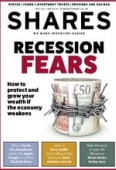Archived article
Please note that tax, investment, pension and ISA rules can change and the information and any views contained in this article may now be inaccurate.
How bond fund managers analyse investments and assess risk

The total value of global bond markets was $128.3 trillion in 2020 according to the ICMA (International Capital Markets Association), which makes them slightly bigger than global stock markets which are worth $124 trillion.
Despite the size of the bond market, it’s probably fair to say the fundamental company research conducted by bond fund managers is shrouded in mystery.
In this feature we shine some light on the main differences between how equity and bond managers go about analysing companies and assessing their attractiveness.
DIFFERENT APPROACH
In a nutshell, bond investors are worried about what can go wrong, and equity investors are more interested in what can go right.
The differences stem from the risk and return characteristics of each asset class. Let’s explore them before discussing the specific metrics used.
Companies (and governments) issue bonds as a way of raising cash. As a condition of borrowing the money from third party investors, the bond issuer promises to make regular interest payments and to buy the bonds back, mostly at par value, after a specific time period.
When fund managers buy bonds issued by a company it is referred to as credit investing. Bond investors are primarily interested in the credit worthiness of a business and its ability to make those interest payments and repay the loan.
While equity investors are also interested in a company’s ability to manage its finances prudently and generate enough cash flow to service its financial liabilities, the focus is also on profitability and growth potential of the business.
BONDHOLDERS HIGHER UP THE PECKING ORDER
One important thing to understand is that bond interest payments and the repayment of the loan are based on contracts and often underpinned by collateral such as land and property.
In other words, the total return that bond investors receive is legally binding and relatively certain. They effectively have the first claim on any cash flows generated.
In contrast shareholder returns are uncertain and rely on capital gains and/or discretionary dividend payments. The former relies on uncertain future profits and the mood of the stock market while the latter are at the board’s discretion.
A company is far more likely to skip a dividend if it needs the cash to service its debts.
In the event of a major failure such as bankruptcy shareholders can lose all their investment. That isn’t the case for bond investors because even in the worst-case scenarios, there is often tangible residual value left over when a company’s assets are liquidated.
That is why bond investors insist on collateral before lending out their capital. The best-case scenario for a bond investor is when every coupon (interest payment) is received on time and the capital is repaid at the end of the loan period.
The best-case scenario for shareholders is when earnings per share rise over time and the stock market recognises the improvement and pushes up the value of the shares.
In essence, equity investing is a riskier endeavour than investing in bonds. But the good news for shareholders is that potential capital gains and cash dividends can result in much higher rewards than those on offer to bond investors.
WHAT TO LOOK FOR
The starting point for bond managers is the cash flow statement and balance sheet and it’s all about getting comfortable with a company’s ability to generate enough cash to make timely interest payments.
Rhys Davies, a bond fund manager at Invesco, prefers to see interest payments covered more than two times by cash flows. Davies also spends time analysing the balance sheet and debt
maturity profile.
A common metric used for measuring leverage is the net debt to EBITDA (earnings before interest, tax, depreciation, and amortisation) ratio. A number below three times is relatively safe and considered investment grade.
Investment grade companies have a lower default rate historically than high yield bonds. When the leverage ratio rises above five times, the risks get exponentially steeper, and companies need to offer higher coupons to attract investors.
Another important part of company analysis for bond investors is looking at banking covenants which banks put into place to protect their loans. They are typically based on the same type of analysis already mentioned such as leverage and interest cover limits.
It might appear odd, but Davies as a bond investor is also interested in conducting competitor analysis and the structure of the industry that a company operates in.
Davies wants to uncover whether a company operates in an industry in structural decline or if competition is becoming more intense, which could impact a company’s ability to service its loans.
This type of analysis is also common for equity managers who are trying to figure out if future profits will come under pressure from factors outside the control of the company.
Important information:
These articles are provided by Shares magazine which is published by AJ Bell Media, a part of AJ Bell. Shares is not written by AJ Bell.
Shares is provided for your general information and use and is not a personal recommendation to invest. It is not intended to be relied upon by you in making or not making any investment decisions. The investments referred to in these articles will not be suitable for all investors. If in doubt please seek appropriate independent financial advice.
Investors acting on the information in these articles do so at their own risk and AJ Bell Media and its staff do not accept liability for losses suffered by investors as a result of their investment decisions.
Issue contents
Feature
- Make the most of your ISA allowance: three stocks to buy now
- Recession fears: How to protect and grow your wealth if the economy weakens
- How bond fund managers analyse investments and assess risk
- How important are commodities in the Brazilian economy and market?
- Emerging markets: Views from the experts
Great Ideas
- ConvaTec has turned a corner and offers growth and re-rating potential
- AG Barr fizzes to profit ahead of pre-Covid levels
- SDI’s £7.7 million deal to immediately boost earnings
- Homeserve shares surge higher on bid approach
- Value specialist Temple Bar is well placed for inflation and rising rates
- Beat inflation with Diversified Energy’s big dividends
- Strong demand drives gains in logistics, residential and development
- Our faith in the managers is undiminished despite a slow first half
Investment Trusts
News
- What a harsh EU clampdown means for Apple, Google and other big tech firms
- Why Pendragon might be the next auto retail takeover target
- US Treasury yields surge as Fed toughens stance on mounting inflation
- Mark Barnett makes a comeback with new Tellworth equity income fund
- Terry Smith uses Fundsmith investor meeting to criticise Unilever top brass

 magazine
magazine









